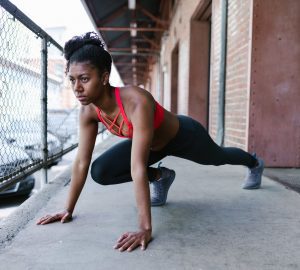It’s midday on a Thursday afternoon as I guide a handful of my clients by saying “let’s all get down on the floor and perform a plank!”. Groans, moans and eye rolls are met and welcomed by yours truly. Poor planks! A bad reputation, misunderstanding and a lack of thrill are all stereotypes that follow its name. This is all incredibly unfortunate as the benefits to this exercise truly outweigh its lacklustre reputation.
So where do we begin? For starters, we have all heard that performing a plank is a fantastic way to build your core. But what does “core” really MEAN? Let’s open with the fact that your core is defined by a multitude of muscles, not simply your abdominal muscles. Instead, your pelvic floor muscles, transverse abdominis, multifidus, internal and external obliques, rectus abdominis, erector spinae, diaphragm (gluteus maximus, latissimus dorsi and trapezius as secondary core muscles) all collectively make up this simple four letter word. There are so many immensely important muscles that collaborate as an incredible system that support a simple plank movement.
In addition to strengthening the core, performing a plank can often be thought of as a rehabilitation exercise for individuals with symptoms of back pain. Jason Dyck, a physiotherapist at Evolve Strength, states that “a well-executed plank requires the lower back to maintain a neutral spine position, making the plank a commonly prescribed strengthening exercise that is less aggravating than an exercise involving movement into either flexion (i.e. sit ups) or extension (i.e. back raises)”.
Even though performing a front plank is mainly a static core function to help support your back, posture, stability and balance, there are many modifications to turn the groans, moans and eye rolls into enjoyable, functional and more dynamic movements, making the plank a more memorable experience.
Here is a look at four different plank positions:
CLASSIC FRONT PLANK
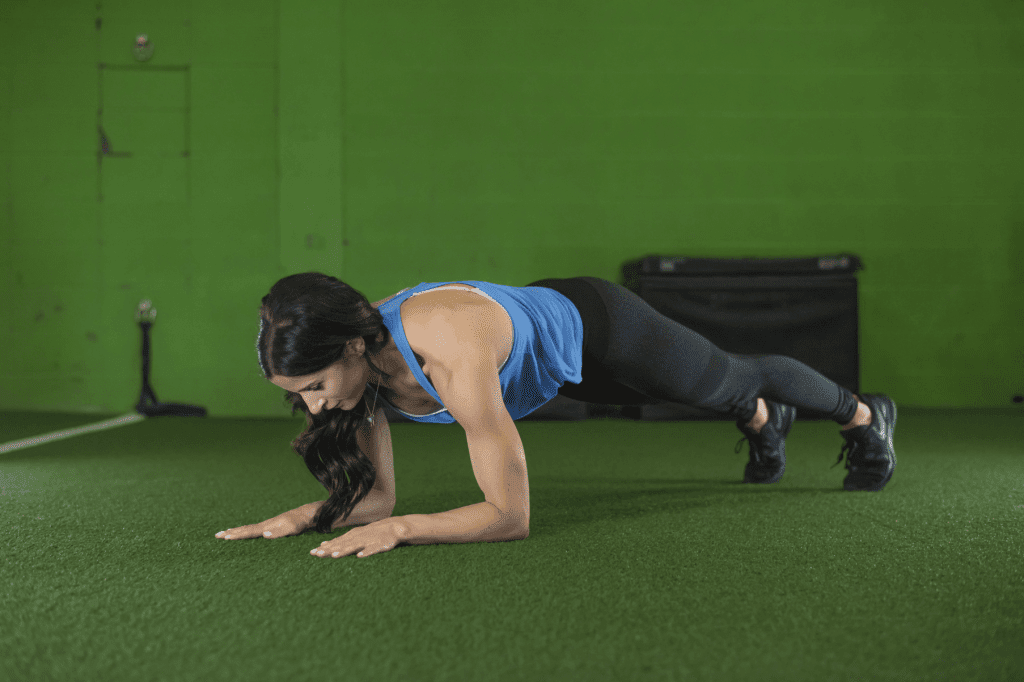
Connect to the floor through your elbows and toes. (From the knees instead of the toes if modifying).
Your shoulders should be aligned over the top of your elbows.
Draw your obliques into your belly button and then bring your belly button to your spine. Holding those two cues.
Push your shoulders away from the floor to round the upper to mid back slightly, encouraging a neutral spine from the neck down.
Engage the glutes and quadriceps.
FRONT PLANK TO ALTERNATING ARM EXTENSION:
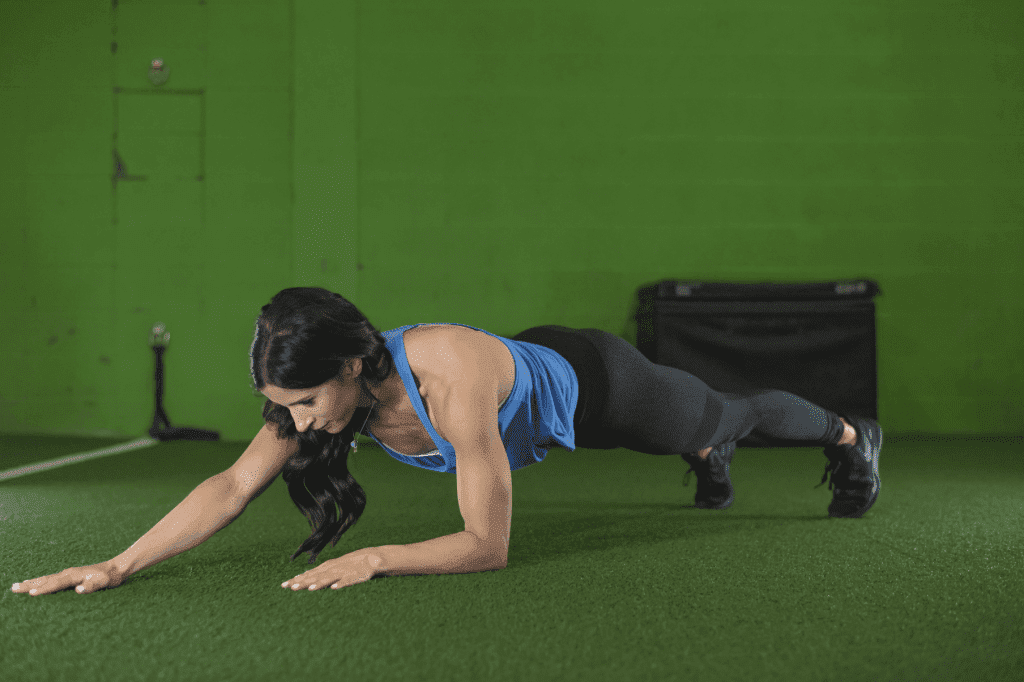
Keep your form from the classic front plank cues described above.
Every two breathes, extend one arm out in front of the body.
When the arm is extended, ensure to keep your hips neutral and not shifted overly to one side.
I tell my clients, “if there was a hot cup of coffee on your back, is it spilling right now?”.
Alternate extending the arms in front of the body and touching the floor.
LATERAL PLANK KNEE DRIVES:
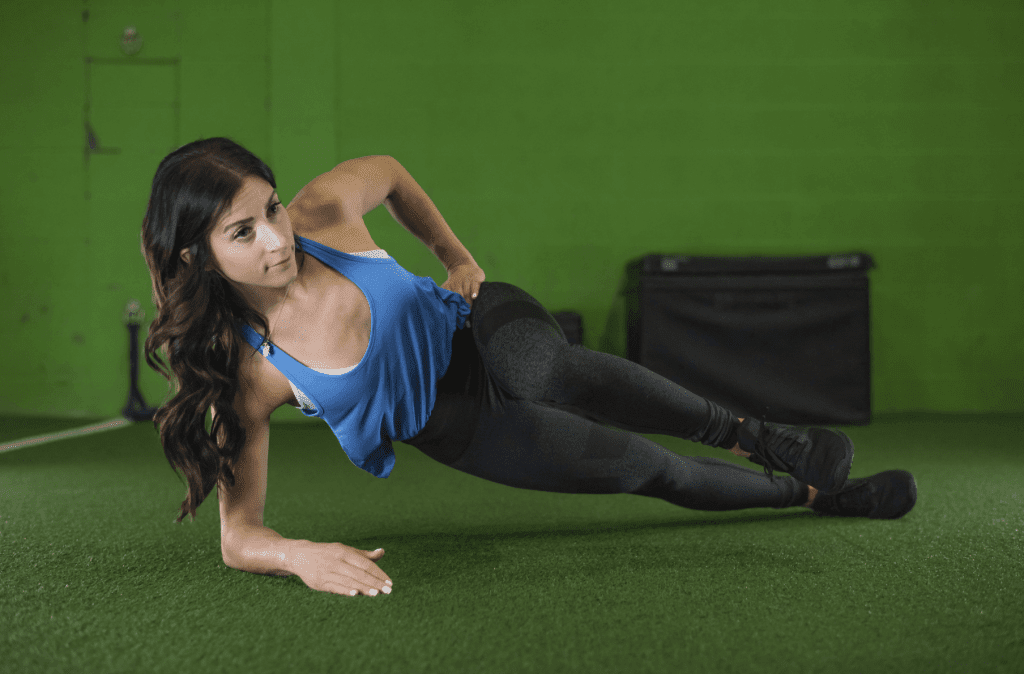
In a side laying position, line the top of your shoulder to your hip down to your ankle on the one side of your body.
Once stabilized in that position, draw the top knee up towards your chest while maintaining high hip positioning.
LATERAL PLANK PLYO KICKS:
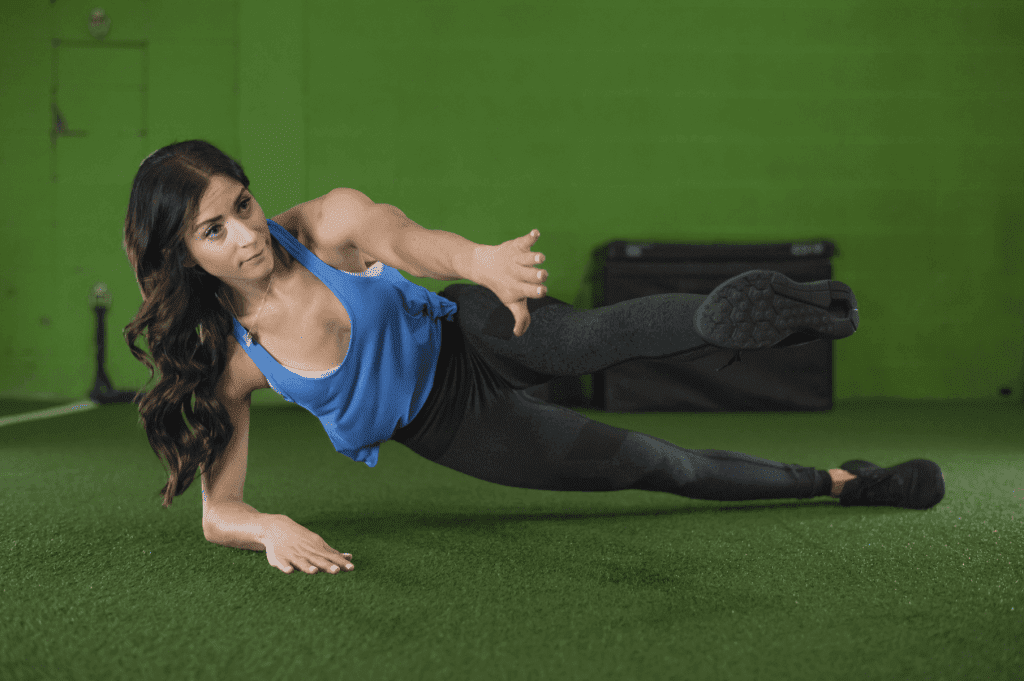
Keep the side laying position as described above.
This time, take the top leg, keeping extended fully, and kick it towards the top of your body.
Having your top arm extended out in front of your chest, as a guide, greatly helps as a marker to bring your toe towards the hand.
To finish the move, bring your top extended leg (now kicked), back to starter position.
By Carrie Habinski






